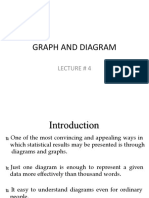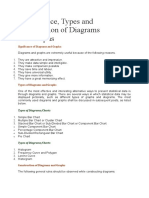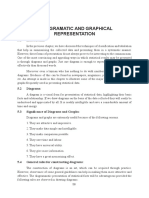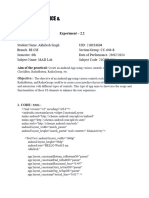0% found this document useful (0 votes)
30 views39 pagesGraphical Presentation of Data
The document discusses the importance of graphical and diagrammatic presentation of statistical data in animal genetics and breeding, highlighting how visuals can simplify complex information for better understanding. It covers various types of graphs and diagrams, including histograms, frequency polygons, and pie charts, along with their functions, limitations, and methods for effective representation. Additionally, it emphasizes the significance of clear labeling and accurate scaling in diagrams to enhance clarity and visual appeal.
Uploaded by
monahire10_395249603Copyright
© © All Rights Reserved
We take content rights seriously. If you suspect this is your content, claim it here.
Available Formats
Download as PDF, TXT or read online on Scribd
0% found this document useful (0 votes)
30 views39 pagesGraphical Presentation of Data
The document discusses the importance of graphical and diagrammatic presentation of statistical data in animal genetics and breeding, highlighting how visuals can simplify complex information for better understanding. It covers various types of graphs and diagrams, including histograms, frequency polygons, and pie charts, along with their functions, limitations, and methods for effective representation. Additionally, it emphasizes the significance of clear labeling and accurate scaling in diagrams to enhance clarity and visual appeal.
Uploaded by
monahire10_395249603Copyright
© © All Rights Reserved
We take content rights seriously. If you suspect this is your content, claim it here.
Available Formats
Download as PDF, TXT or read online on Scribd
/ 39
























































































